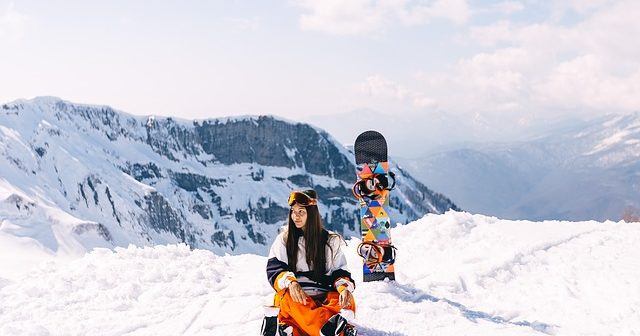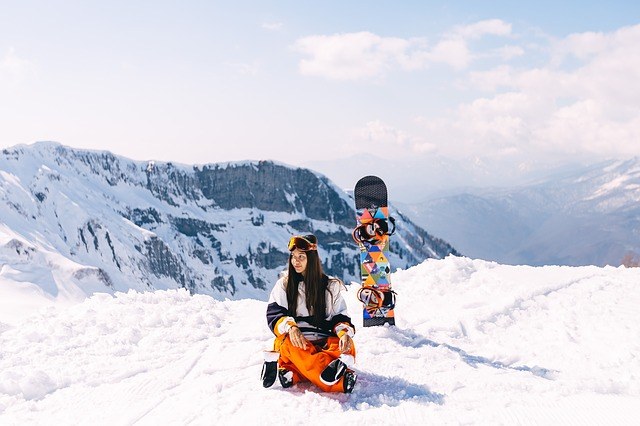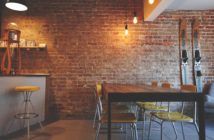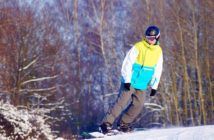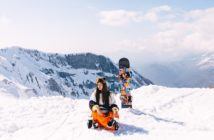Snowboarding can be a fun, if challenging, hobby. Where skiing gives you two tools to balance on, snowboarding requires that you find your real center of gravity or else go tumbling into a big pile of snow.
First-time snowboarders don’t always expect snowboarding to be as demanding a practice as it is. In light of this, many people go into their first snowboarding experience unprepared.
The best thing you can do when seeking out your snowboarding essentials is to keep in mind the diversity of snowboarding attire you’re going to need.
It’s not just “jacket, board, boots – good to go!” Your first time snowboarding experience is going to make you inspect your wardrobe, but will also require you to ask questions about how in-shape you are and how comfortable you want to be on the slopes.
While you’re getting ready, take a look through this list of necessary gear and make sure you’re adequately equipped, so that you can make your first attempt at snowboarding as successful – and fun – as possible.
Contents
Snowboarding Essentials
What do you need for snowboarding, really? Whether you’re on a budget or would prefer fewer items to pack, it’s wise to know what you need and what’s superfluous.
Let’s start out by creating a snowboarding checklist. This will cover all of the essential snowboarding gear for beginners and then go into more detail about the options you’ll have to choose from when putting together your first-time snowboard kit.
When you’re preparing to hit the slopes, make sure you have the following:
- Layered Clothing.
- Waterproof Jacket and Pants.
- Boots and Bindings.
- Helmet.
- Goggles.
- Gloves.
- Pads (optional).
And, most importantly, a snowboard that suits you perfectly.
Choosing Your Snowboard
Picking out a snowboard can be exciting and intimidating. There are more options and customizations available for snowboards than you may think!
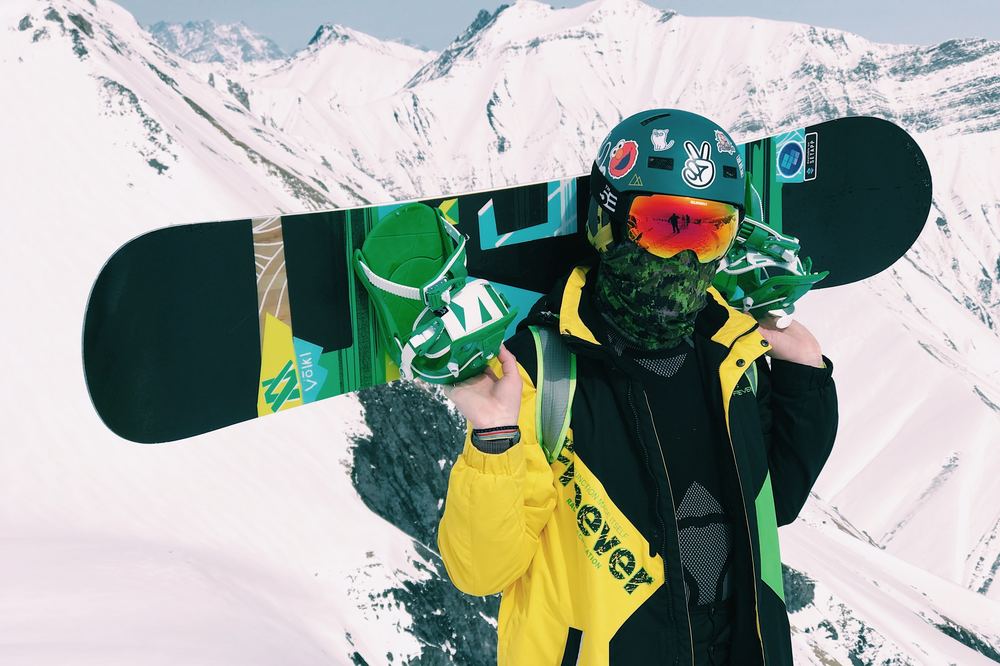
Take into account the sizing of your snowboard and the factors that go into determining that size, before you go ahead and make a purchase on a whim.
How to Size a Snowboard
When determining the size of your ideal snowboard, there are several personal factors to consider, so that the snowboard you eventually take down the slopes is the perfect fit for you.
Bodily Dimensions
First of all, you have your height and weight. The snowboard that’s best for you should come to a stop between your chin and your nose with its butt planted firmly on the ground.
If you’re taller than average, this means that your board may be particularly intimidating. People who are shorter, in turn, will have snowboards that are also shorter.
Height isn’t the most important factor in snowboard sizing, however. A person’s weight has more say as to how their board should be designed.
Now, most of us don’t like talking about our weight, but it’s important to admit to yourself how much pressure you may be placing on your board.
Overall, your board should be able to support you and accommodate your stance properly.
When you’re looking at boards, you’ll want to practice your stance a few times in a mirror. Bends your knees and keep your feet at least shoulder-width apart, then shift until you feel as though you can remain in this position comfortably.
As soon as you feel at home and balanced in your stance, you’ll know what your ideal snowboarding position looks like.
Shoe Size
It’s also crucial to know the appropriate size of your snowboarding boots. The mounts on your individualized snowboard will have to be custom-sized or at least able to keep your boots fixed to the board tightly.
Not only that, but the size of your boots will determine how wide your snowboard ends up being.
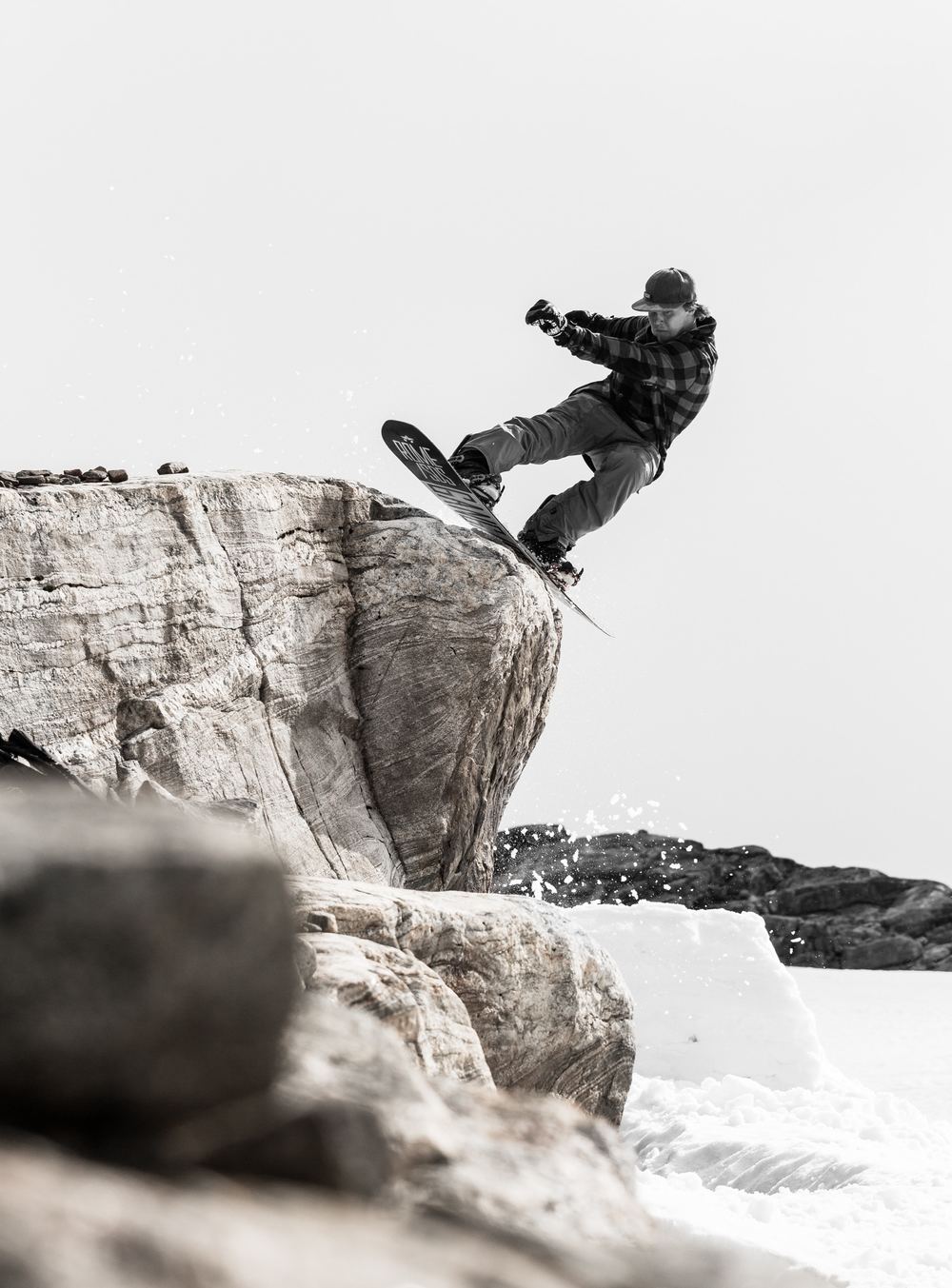
No matter what, make sure that your snowboard is broad enough to keep your toes and heels secure.
Toes or heels that dangle off the edge of your board can not only disrupt your ride down a slope but can lead to serious injuries.
Skill Level
There are also boards specifically designed to be ideal for beginners. These boards are smaller and more maneuverable than other, more extreme boards.
When you’re doing your pre-trip shopping, be honest with the staff of the shop you’re visiting. Let them know that you’re a beginning snowboarder, and they’ll be more likely to hook you up with a board that’ll keep your trip fun and safe.
Flex
The size of your ideal snowboard is nearly as important as that snowboard’s flex.
A board’s flex controls the way it turns when taken down a slope and how easily it will transfer from powder to less-ideal conditions.
Boards with a softer flex are excellent for beginning snowboarders. A softer flex will allow you to turn more easily, thereby ensuring that you can avoid oncoming obstacles, but it can also save you from exerting unneeded effort as you generally steer.
Boards with harder flexes, then, are a little more difficult to control, but these boards can move down a hill more quickly and are better for free-riding or performing tricks.
People with more experience and a greater level of fitness will appreciate this freedom and control, while newbies may be easily tired or overwhelmed by it.
Preferred Type of Snowboarding
Speaking of tricks: You’ll want to decide, before you go on your trip, what kind of snowboarding you want to try your hand at the most.
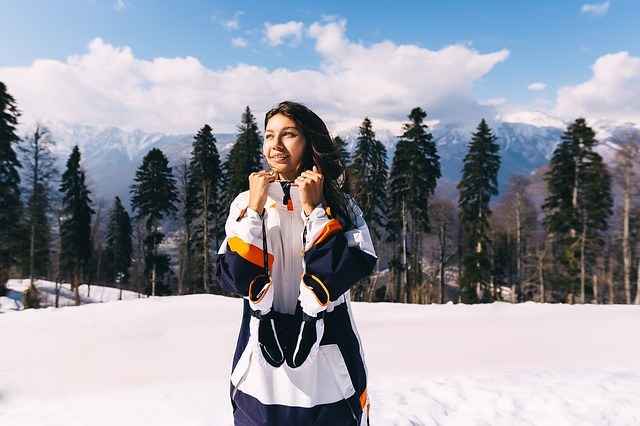
There are several different types of snowboarding. Freestyle snowboarding is a branch that lends itself to tricks or riding through snowboarding parks. All-mountain snowboards, comparatively, are better for downhill activities.
If you’re a beginning snowboarder, then you’ll likely want to start out with a board that advertises itself either as versatile or as solely an all-mountain board.
Bindings
Finally, you should consider the type of bindings you’ll have on your board. Bindings are the straps that allow your boots to hook into the board effectively.
You can choose from strap-in bindings or rear-entry bindings, according to your preference. Each type uses two straps in order to secure your feet. One of these straps circles around the ankle, whereas the other secures your toes.
Rear-entry bindings are one of the more comfortable options to have on a board. However, strap-in bindings are considered safer and more secure, so they’ll likely be found on most commercial boards.
Here’s a video explaining more on choosing a snowboard.
What to Wear Snowboarding
Those are the details of snowboard-specific gear and customization – but you’ll need to know what to wear snowboarding, too.
We’ll start out with the layers you should pack with you, then move on to the extra, snowboarding-specific accessories you may need to buy before your trip into the mountains.
The most important thing your clothing can do for you while you snowboard – besides keep you warm – is wick away any sweat or snowmelt that would otherwise get onto your skin.
Not only will this keep you dry, but you’ll be able to come away from your snowboarding trip without having to worry about sweat gathering in uncomfortable places.
This also keeps you from accidentally contracting athlete’s foot. As such, keep waterproofing in mind while pulling together some of the following layers.
Layer One: Underwear
You’ll want to start out with a good pair of long underwear. Sure, it may seem old-fashioned, but high-quality long underwear will go a long way in keeping you warm and dry.
Layer a pair of wick-able long underwear with a long-sleeved top. Whatever you do, try not to wear cotton while you’re out snowboarding.
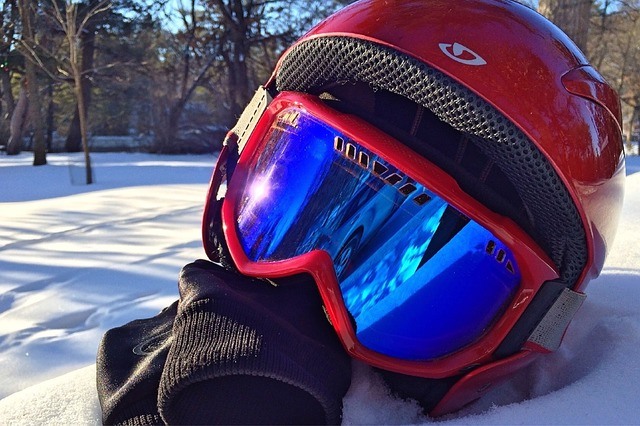
Cotton will hold onto any sweat or snowmelt that sticks to your skin and will make your snowboarding experience a lot more uncomfortable.
Additionally, in terms of socks, while you may instinctively want to wear two pairs, try to stick with just the one. If one layer beings to slip while you’re out on the slopes, you may find yourself uncomfortable or distracted while snowboarding.
Try to find socks that are fuzzy and secure in order to avoid having to dig into your boot when you could be zipping down a hill.
Layer Two: Insulation
After you’ve established your base layer, you’ll want to focus on clothes that keep you warm.
Fleece is especially useful in this layer. Find yourself a comfortable hoodie or long-sleeve shirt as well as a pair of sweatpants, and you’ll be on the right track.
Remember again that you should avoid wearing cotton at all costs.
Layer Three: Waterproofing
Once you have your two under-layers settled, you can decide on the style of coat and snow pants you want to take with you on your trip.
It’s important in this stage to look for products that are advertised as wind- and waterproof.
As we’ve mentioned before, cotton clothing is exceptionally good at holding onto water, which is great during a sunny jog or for most daily activities. However, because of your several layers and a greater contact with snow during your trip, it’s a nightmare to have on your body.
The last thing you want while snowboarding is to be wet. By finding a coat and pair of pants that actively work to keep you dry, you’re doing your other layers of clothing a favor, ensuring that you stay as comfortable as possible while learning how to excel in this sport.
Layer Four: Accessories
Finally, here come the extra bits and bobs that you can wear in order to make yourself more comfortable on the slopes.
These include waterproof gloves, a pair of goggles to help you see through the powder, and a helmet.
Helmets are, of course, optional gear, but you’re unlikely to see people without them on the slopes or in a snowboarding park.
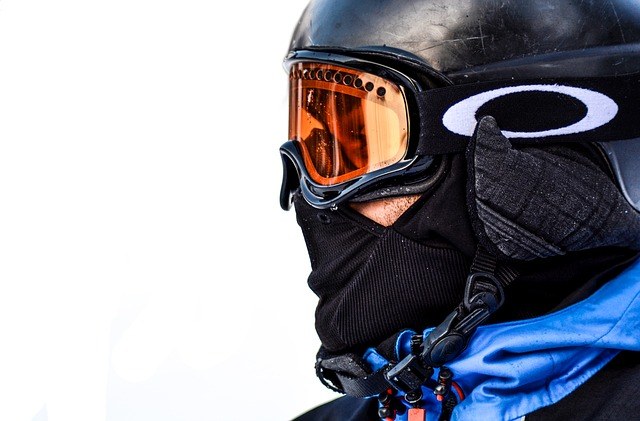
Snowboarding is often considered – especially when a person is just starting out – to be a hobby that’s more about falling than it is about a successful ride. As such, you’ll want to do everything you can to ensure that your brain stays safe.
There may also be cases where you accidentally crash into other boarders or skiers or the occasional tree, so don’t leave your safety to chance.
Layer Five: Boots
Like snowboards, boots have different degrees of flexibility. A boot that is softer can be more comfortable to wear, and this style is often a favorite for newbies to the sport.
It’s easier to walk in and requires a shorter transition period. However, snowboarders with more experience will likely prefer boots that are less flexible, as this allows them to put greater force into their ride and better secures them to the board.
You should also evaluate your boots’ laces, in order to guarantee that you can tie and re-tie them properly while wearing thick snowboarding gloves.
It’s important to confirm that you feel secure when they’re finished, so they won’t come loose mid-ride.
Here’s a video showing an example of some snowboarding essentials.
Renting Versus Buying Your Gear
With all of that gear in mind, it may seem expensive to prepare for a snowboarding trip. You have the option, however, to rent some of your gear as opposed to buying it all.
While your outfit is your responsibility, most ski lodges have rental areas in which you can find a snowboard and pair of boots that fit you perfectly well.
If you don’t plan on making your way to the mountains each weekend, then it’s wise to rent your gear, as this requires less investment and you can rely on the expertise of the staff to outfit you.
However, if you’ve caught the snowboarding bug, buying customized gear will save you money in the long-run.
Conclusion
When you head out onto the slopes for the first time, you’ll want to ensure that you’re as appropriately equipped as possible.
Do what you can to stay warm and comfortable. Make sure that your board suits you appropriately and that your outfit will keep you dry over the several hours you spend in the snow. Keep your safety in mind, and you should have a great time!
Overall, you don’t have to be intimidated by snowboarding as a hobby. So long as you remember your snowboarding checklist, before long, you’ll be racing through the snow without a care in the world.
What else do you recommend for snowboard attire?

